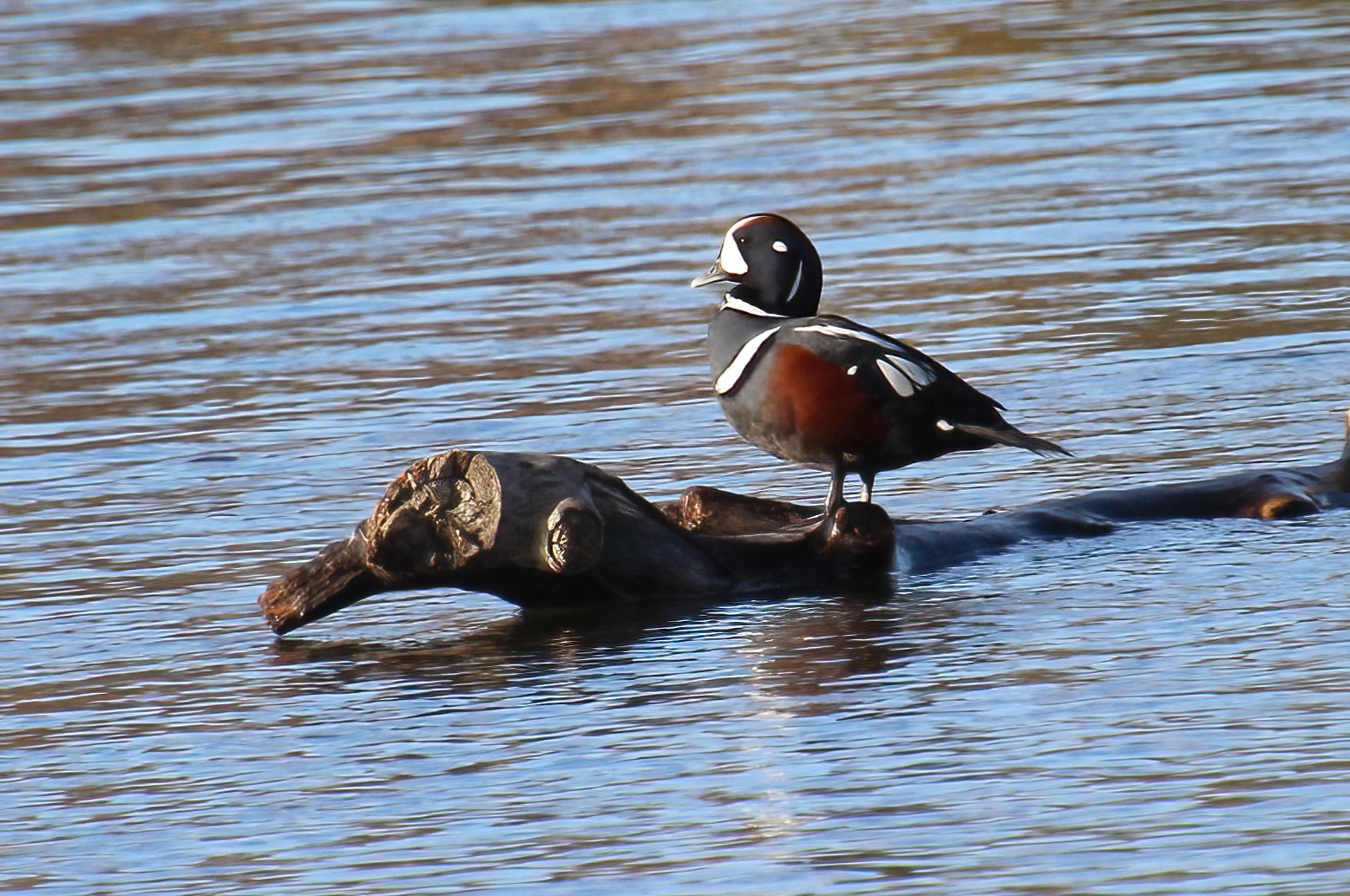When I hear the word “harlequin”, two memories come immediately to mind. The first is looking at the massive Harlequin Romance novel collection, lovingly owned and read by Ida C. Curtis, a Long Beach, California friend, who passed 40 years ago. The second memory is that of watching an absolutely astonishing in appearance duck, bobbing and diving freely in the cold waters of the Bow River in November of 2021. Truly a masked marauder of the winter waters, the Harlequin Duck is a unique looking species that visits the lower Bow during the late fall and winter months.
Sporting a large head, small beak and a colorful display of feathers, the male Harlequin in breeding colors is a show stopper. Ornately “painted” slate blue, highlighted with white stripes and chestnut sides, this is truly an opening act for any species. The head is marked with a white crescent in front of the eye, chestnut kissed brows and a white spot near the auricular region of the face. Females wear a soft gray-brown feather array, all enhanced with white around the eye, the bill and the cheek.
When not in coastal waters during the winter, fast moving rivers are home for the Harlequin. This ducks love to dive, pursuing invertebrates on river bottoms and consuming small fish if available. Living in fast flowing rivers has its challenges. Harlequins have more broken bones than any other duck species, a fact supported via x-rays and the examination of museum specimens. Both social and monogamous by nature, Harlequins can live long lives, with one in British Columbia exceeding 20 years of age. Unique to this species is its call, even though it is a duck. In place of any quack, the Harlequin emits more of a squeak, earning it the nickname “sea mouse”.
As Elaine and I see fully colored male and female Harlequins, we wondered when and where this species would pass through a molt phase. Researchers note that after the females begin incubating the eggs, male Harlequins head to the west coast waters to molt in late June or early July. With much wear and tear done to key feather groupings, flight feathers are shed and replaced over a three to four week time period, where flight is not possible. Females head to coastal waters in August and September to molt, often joining the males at the same location.
Most Alberta sightings of Harlequin Ducks occur in the fast flowing rivers, whose headwaters are located in our Rocky Mountain Range. These same rivers can provide breeding areas as well, especially in British Columbia and Alaska. Fortunately, these locations have high quality water and are pristine, conditions essential to the survival of low reproductive rate species.
Histrionicus histrionicus, is aptly named. “Histrio” translated from Latin, means “stage player” and truly males are the ones who wear the colors of medieval court jesters. Be it a romance novel on a friend’s bookshelf or a small duck on a river, we can all use a little harlequin in our lives.
A Feathered Romance

In response to Canada's Online News Act and Meta (Facebook and Instagram) removing access to Canada's local news from their platforms, Anchor Media Inc encourages you to get your news directly from your trusted source by bookmarking this site and downloading the Rogue Radio App. Send your news tips, story ideas, pictures, and videos to info@anchormedia.ca.






